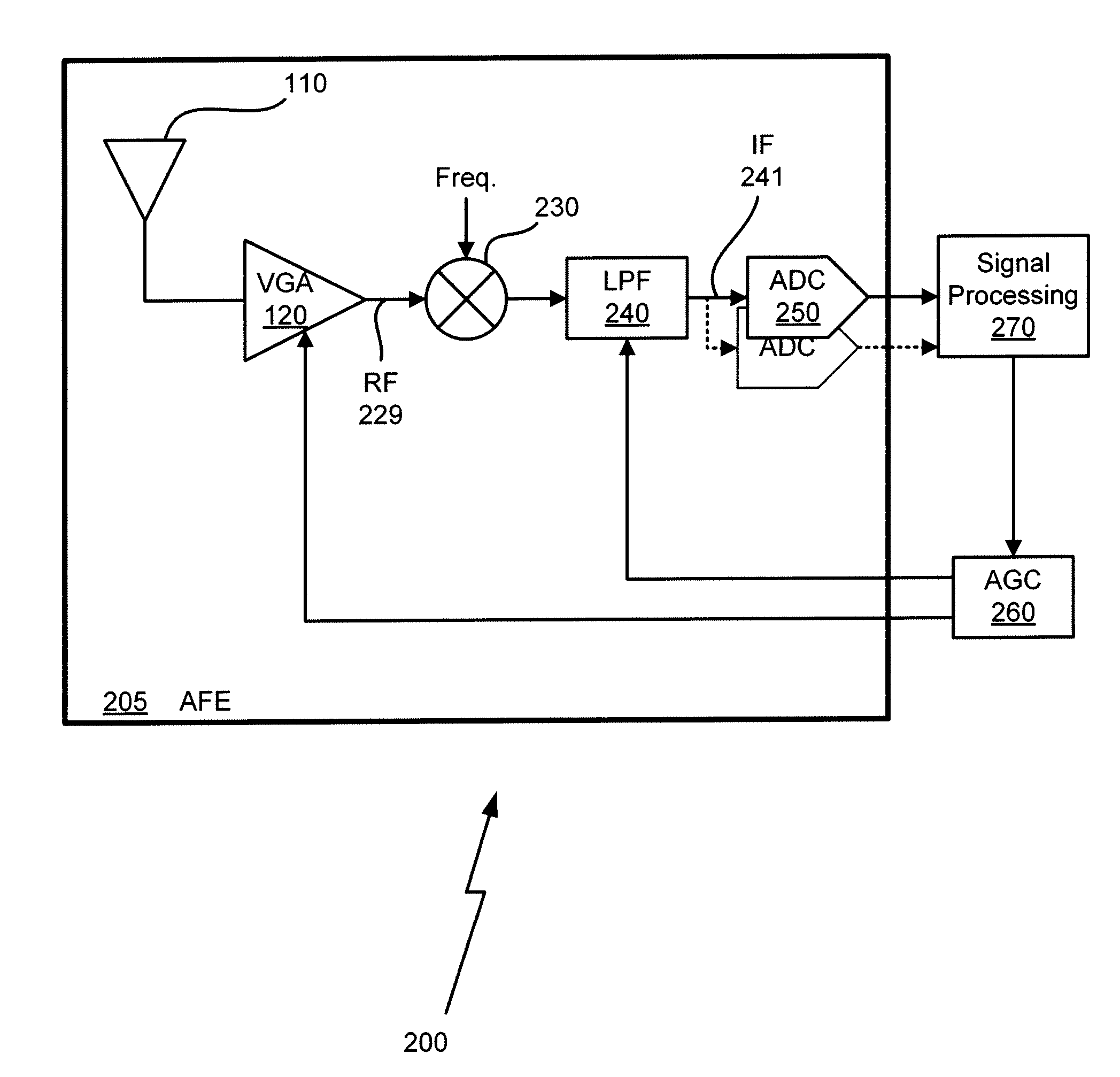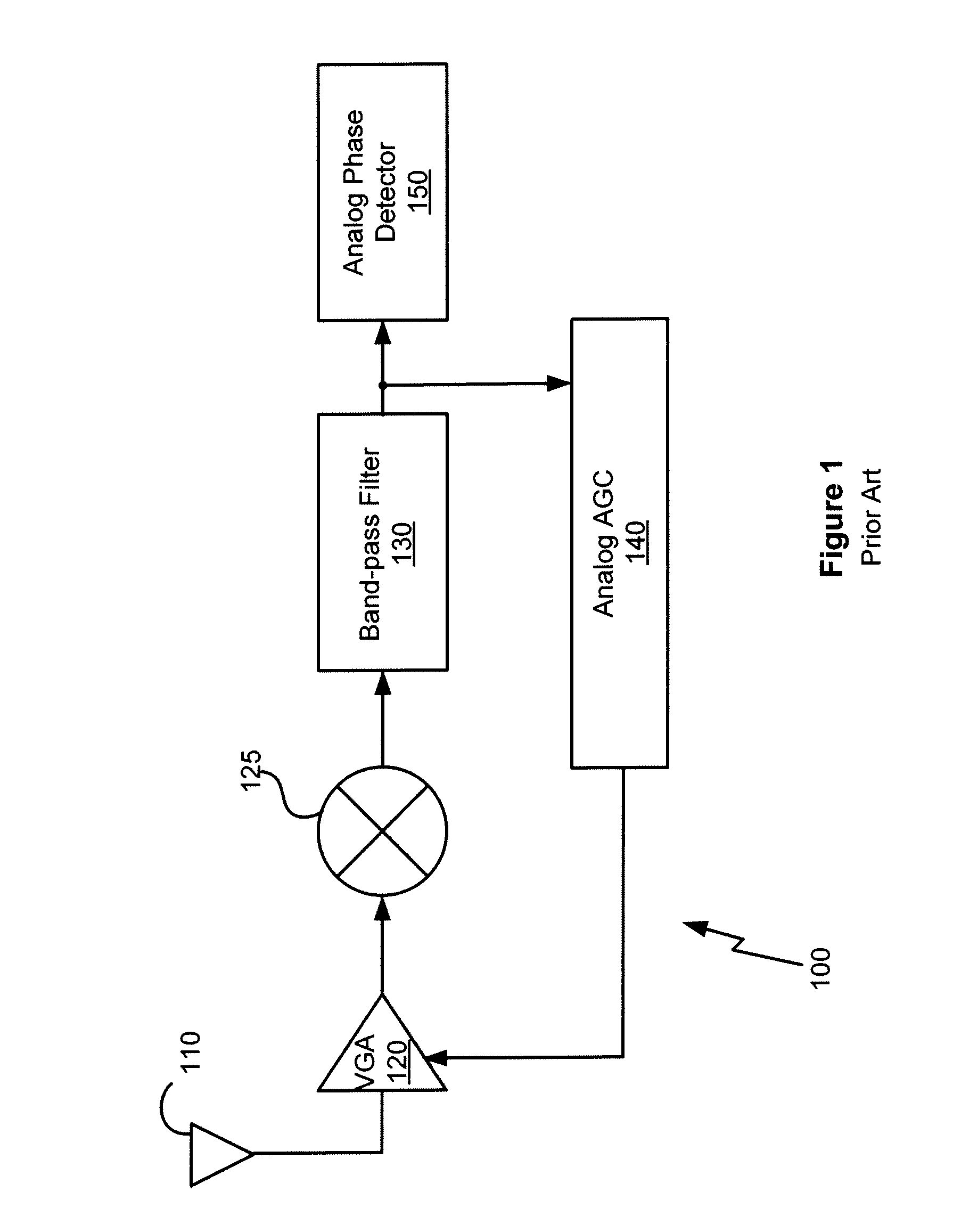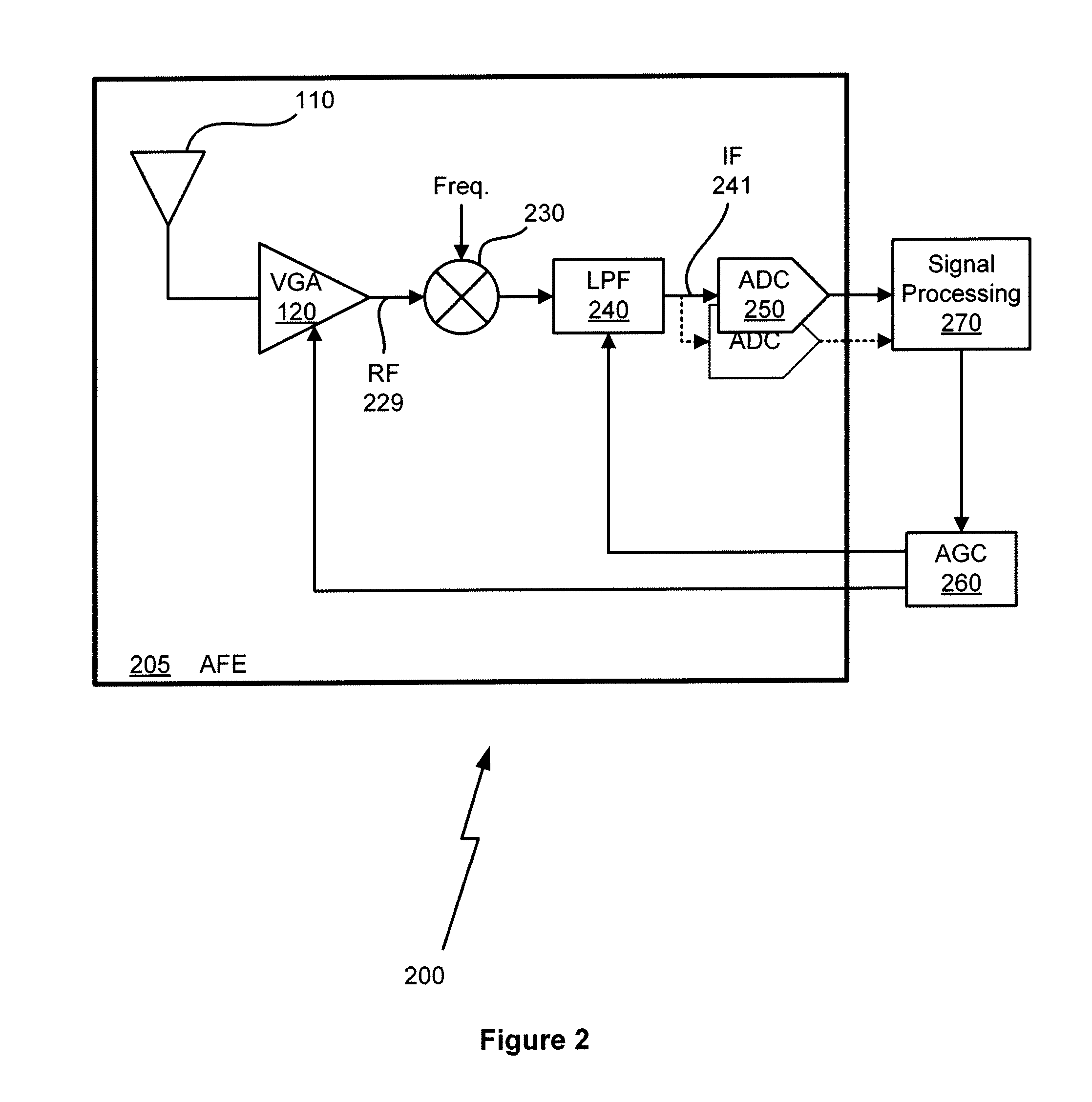Hybrid Zero-IF Receiver
a zero-if receiver and receiver technology, applied in the field of hybrid zero-if receivers, can solve the problems of complex analog circuit design, difficult to execute complex analog circuit designs, complicated design of bluetooth receivers, etc., and achieve the effect of simple analog filter design, less prone to noise sensitivity, and easy implementation
- Summary
- Abstract
- Description
- Claims
- Application Information
AI Technical Summary
Benefits of technology
Problems solved by technology
Method used
Image
Examples
Embodiment Construction
[0020]FIG. 2 is a block diagram of an exemplary hybrid zero-IF Bluetooth receiver 200 with a relatively simple analog filter design and minimal space requirements that can advantageously support extended data rates. The Bluetooth receiver 200 may include an analog front end (AFE) 205, an automatic gain controller (AGC) 260 and a signal processing unit 270. The AFE 205 may be configured to receive and digitize RF signals and the signal processing unit 270 may be configured to process signals provided by the AFE 205 and recover transmitted symbols.
[0021]The AFE 205 includes an antenna 110, a VGA 120, a first mixer 230, a low-pass filter (LPF) 240, and an ADC 250. The antenna 110 may receive RF signals such as Bluetooth signals. Bluetooth devices utilize frequency hopping from a first band to a second band as a form of a multiple access scheme. As described herein, each frequency band is 1 MHz wide. In one embodiment, the AFE 205 may be implemented with two signal paths that may operat...
PUM
 Login to View More
Login to View More Abstract
Description
Claims
Application Information
 Login to View More
Login to View More - R&D
- Intellectual Property
- Life Sciences
- Materials
- Tech Scout
- Unparalleled Data Quality
- Higher Quality Content
- 60% Fewer Hallucinations
Browse by: Latest US Patents, China's latest patents, Technical Efficacy Thesaurus, Application Domain, Technology Topic, Popular Technical Reports.
© 2025 PatSnap. All rights reserved.Legal|Privacy policy|Modern Slavery Act Transparency Statement|Sitemap|About US| Contact US: help@patsnap.com



